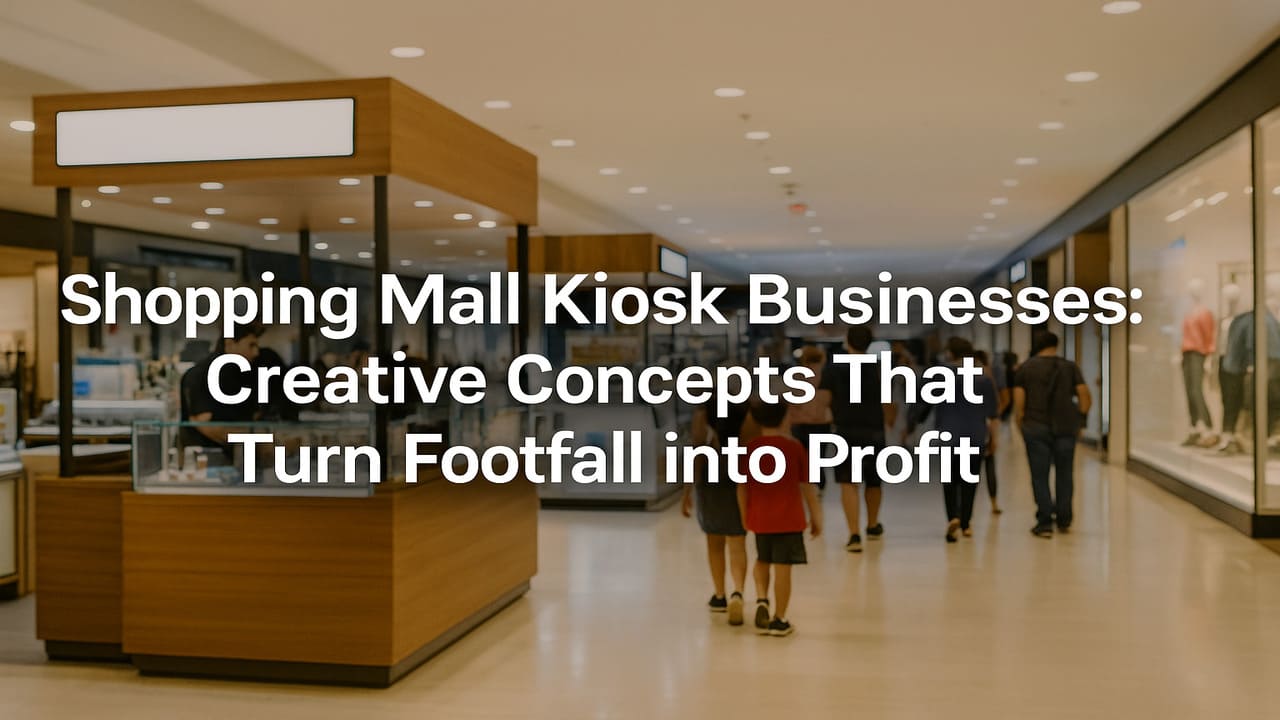
The Berkshire Mall – In the dynamic landscape of modern retail, shopping mall kiosks have evolved far beyond their early roles as simple stands selling mobile phone accessories or gift cards. Today, kiosks have become nimble, creative, and profit-driven business platforms that capitalize on the immense foot traffic within malls. With lower startup costs compared to full-scale storefronts and the flexibility to adapt to changing consumer trends, kiosk businesses have carved a unique and vital space in mall-based commerce.
Many entrepreneurs see kiosks not merely as temporary booths, but as test labs for innovative ideas that can eventually scale into permanent retail outlets or even national brands. The kiosk model’s agility allows vendors to pivot quickly, experiment with seasonal offerings, and establish direct engagement with customers all within the bustling environment of a shopping center.
While traditional stores must compete with high rent and long lease agreements, kiosk owners enjoy short-term contracts, lower overhead, and premium visibility, especially in high-traffic corridors between anchor tenants. This structure makes kiosks a preferred entry point for small businesses and startups aiming to enter the retail world without heavy financial burden.
“Read More: Google Features Desktop Mode Similar to Samsung DeX for Android Phones”
The success of a mall kiosk business hinges not only on what is being sold, but also on how, where, and to whom it is being offered. Kiosk operators often rely on impulse purchases, which means that both visual presentation and strategic location are crucial. Bright colors, eye-catching displays, live demonstrations, and creative branding are common techniques used to stop shoppers in their tracks.
Kiosks located near food courts, escalators, or popular anchor stores like department stores or electronics retailers tend to perform better due to consistent and diverse foot traffic. However, success also depends on understanding mall demographics a kiosk selling trendy tech gadgets may thrive in a mall with a younger crowd, while handmade crafts or gourmet snacks may fare better in family-friendly environments.
Adaptability is also a key advantage. Seasonal kiosks, such as holiday-themed gift stands or Valentine’s Day florists, are known to generate significant short-term profits. Additionally, kiosks allow owners to test multiple locations within the same mall or move to different shopping centers depending on performance.
The rise of niche interests and lifestyle-driven consumption has given birth to a new generation of kiosk businesses that go far beyond basic retail. These concepts often blur the line between product and experience, creating memorable micro-shopping moments for mall visitors.
One notable example is health and wellness Kiosk Businesses. From mini massage chairs to essential oil roll-ons and vitamin-infused drinks, these businesses tap into the growing market of self-care and mental health. Interactive booths with free samples or quick relaxation demos often draw large crowds.
Another trend is customization. Kiosks that offer personalized phone cases, name-engraved jewelry, or on-the-spot embroidery appeal to shoppers seeking unique, made-for-me gifts. These kiosks often include a live creation process that attracts attention and adds perceived value.
Even digital services have found a home in kiosks. Tech support, phone repair, and app consultation stands are now standard in many malls, providing practical services alongside impulse retail. These businesses cater to convenience, filling gaps that big-box retailers may overlook.
“Read More: Calling All Entrepreneurs: Turn Your Business Vision into Reality at The Berkshire Mall”
Unlike traditional retail stores, kiosks require far less capital to launch. The average setup cost is significantly lower, allowing entrepreneurs to test their concept without risking large investments. Flexible rental terms also mean businesses can operate during peak seasons and pause during slower months.
Kiosk operators are typically hands-on, giving them immediate access to customer reactions, questions, and purchasing behavior. This real-time feedback is invaluable for improving product offerings and marketing strategies without relying on data analytics alone.
Positioned in prime mall corridors, kiosks are hard to miss. With attractive displays and interactive setups, they often benefit from spontaneous purchases. The physical proximity to the customer creates a sense of accessibility and urgency that boosts conversion rates.
What many people fail to recognize is that shopping mall kiosks have served as the foundation for several now-famous brands. Companies like Proactiv, GoPro, and even T-Mobile once relied heavily on kiosk models to introduce their products to the public before expanding into full-scale operations.
This model provides a valuable real-world testing ground for branding, pricing, product-market fit, and customer service strategies. Many successful kiosk owners eventually transition to online stores, pop-up shops, or even permanent mall leases after proving their concept works.
Furthermore, malls themselves have begun to acknowledge the value kiosks bring, not just as rent contributors, but as enhancers of the customer experience. With more malls embracing mixed-use spaces and interactive environments, kiosks are now part of a larger effort to revitalize foot traffic in an increasingly digital world.